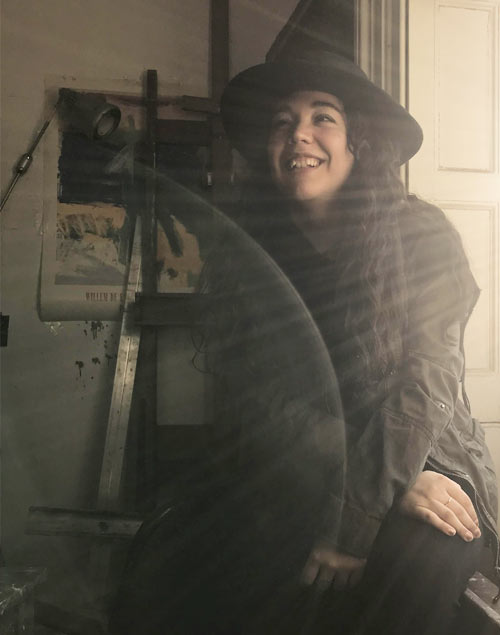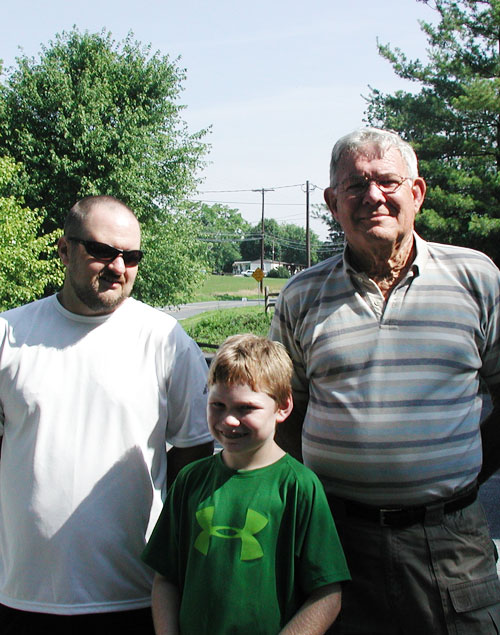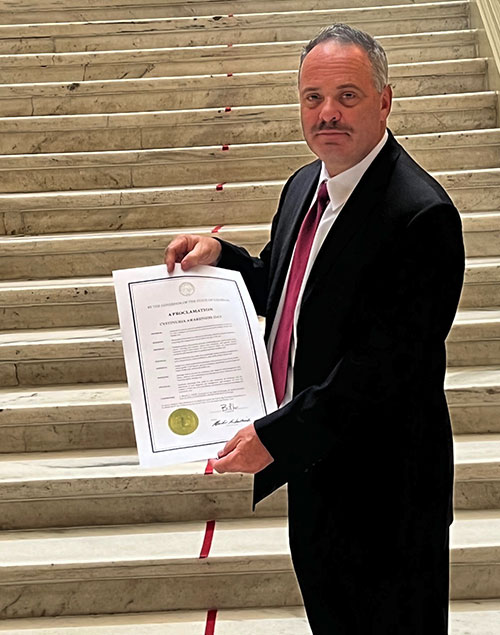 June 24 is Cystinuria Awareness Day.
June 24 is Cystinuria Awareness Day.
Together, we can raise awareness of Cystinuria throughout the entire month of June.
Ever had a kidney stone,
or know someone who has?
If so, you may understand the excruciating pain associated with them. Men and women alike, often describe the experience as the worst and most intense pain of their life. Imagine having multiple kidney stones per week or month. This is the life of a Cystinuric.
Cystinuria is a rare, debilitating genetic disorder characterized by frequent and recurrent kidney stone formation. Those who suffer from Cystinuria can experience kidney stones as frequently as daily. Because there is no cure, a Cystinuric can expect a lifetime of producing kidney stones and dealing with the associated pain and expense.
People suffering from Cystinuria can have frequent hospital visits and surgeries to remove kidney stones or manage the pain related to kidney stones. There are very few options when it comes to therapeutic drugs to manage Cystinuria. Between the cost of surgery, and the drugs to control the disease, life as a Cystinuric can be extremely expensive. Fortunately, the Affordable Care Act protects those with cystinuria and other preexisting conditions from discrimination by health insurance companies.
Cystine stones form very quickly, sometimes overnight, unlike other calcium oxalate stones which can take years to form. The larger stones may require surgical interventions, but surgery is usually the last resort because of the sheer quantity of stones a Cystinuric produces each year.
In the US, Cystinuria affects approximately 1 in 10,000 people, so it’s not unusual for Cystinurics to have to explain their condition to medical staff. Cystinuria does not discriminate, and affects people of all genders, races, ethnicities, and ages.
Cystinuria is a genetic defect the impairs intestinal absorption and renal reabsorption of cystine. Cystine is then excreted at high levels through the kidneys and is insoluble (meaning not able to dissolve). In this environment the cystine crystalizes, forming stones and potentially causing damage to the kidneys.
Through Cystinuria Awareness Day, we hope to bring more awareness, research, and awareness to this debilitating disease.
Personal Stories of People Living with Cystinuria
If you would like to share your personal Story CLICK HERE
How Can I be involved?
1. Get Social
Download out social media kit and show the world you support Cystinura Awareness Day.
Download the Social Media Kit Here
2. Share your story about what it’s like to live with Cystinuria.
Share your story and we’ll post it on the site. As we raise awareness of Cystinuria, its good to have real life stories of what it’s like living with this disease so people can understand Cystinuria and the impact on people lives and those around them.
Click Here to Share Your Story
3. Does your state currently
recognize “Cystinuria Awareness Day” ?
If you would like to help represent ICF, to have your state recognize Cystinuria Awareness Day, please contact us.

State Proclamation
Whats involved if I want to have my state recognize Cystinuria Awareness Day?
Michelle Gibbs was instrumental in getting the day officially recognized in California.
Here is how she describes how the process went for her.
Firstly, I would say, anyone interested should message Gayle Sweeney a the International Cystinuria Foundation. She has been coordinating these volunteer efforts for year, and knows which states already have either a proclamation or resolution for Cystinuria Awareness Day.
I jumped at the chance to make that happen in my state!
Since some states already have similar bills, Gayle had someone send me a sample of the language from another state, so I just needed to make a few changes here and there to fit my particular state. From there, it was a matter of contacting the right person in the state legislature to ask them to introduce the bill for me. I began this quest back in 2019. Each state has their own rules and deadlines on the process, so my initial request for a proclamation had to be changed to a request for a concurrent resolution.
My representative in the state Assembly agreed to introduce the bill, but he also happened to be running for a seat in the Senate that year, which delayed the resolution. At first, this was because he was in the middle of an election, and then when he won, he had to change his office and staff over to the Senate. With all these delays, we missed the deadline again, so I had to wait to contact him at the beginning of 2020. We all know how that year went! lol
After successfully introducing the bill, getting a unanimous vote to pass the bill (39-0) in the Senate, Covid hit and the resolution ended up “dying” because our legislature stopped meeting, and it was never heard in the Assembly.
With 2020 behind us, I took a chance and contacted my Senator again in January of this year to ask if he would re-introduce the bill. He agreed, and we just got our new bill number! I didn’t have to rewrite anything. The moral of this story is, “persistence is key.” I don’t think the process itself is hard. I also think it’s probably usually a lot faster!
– Michelle Gibbs




















